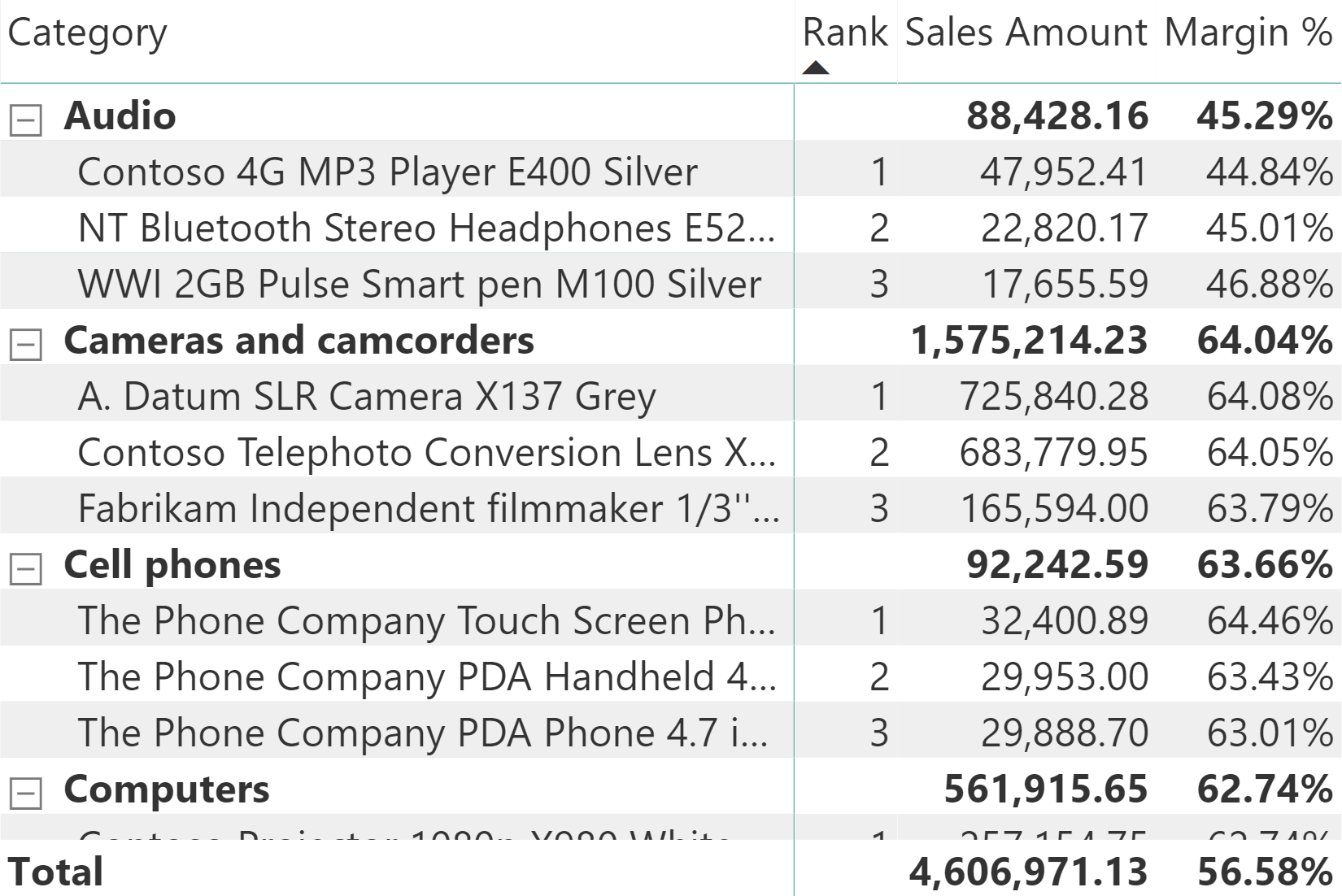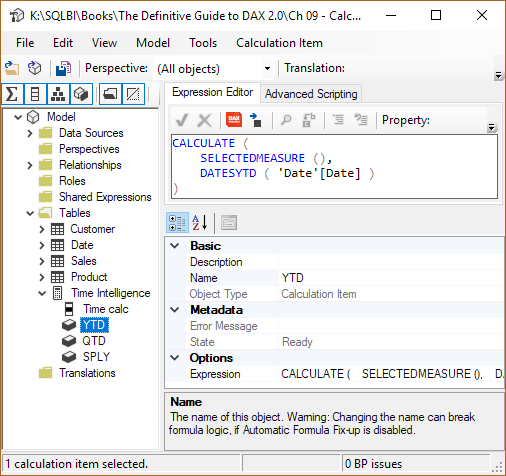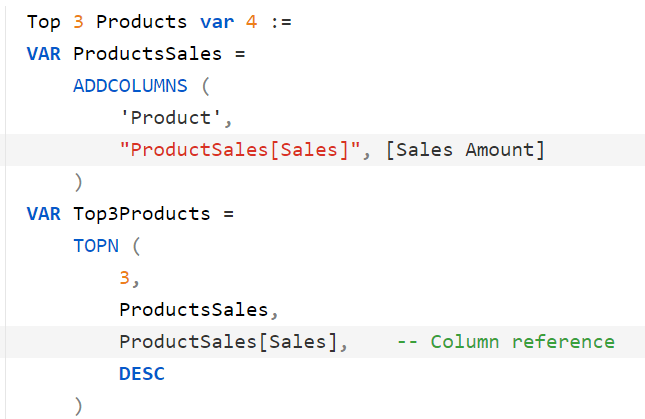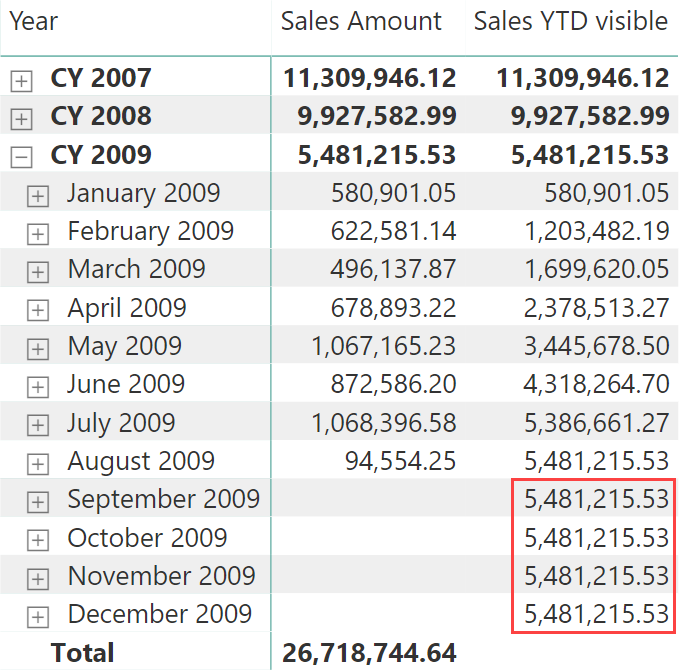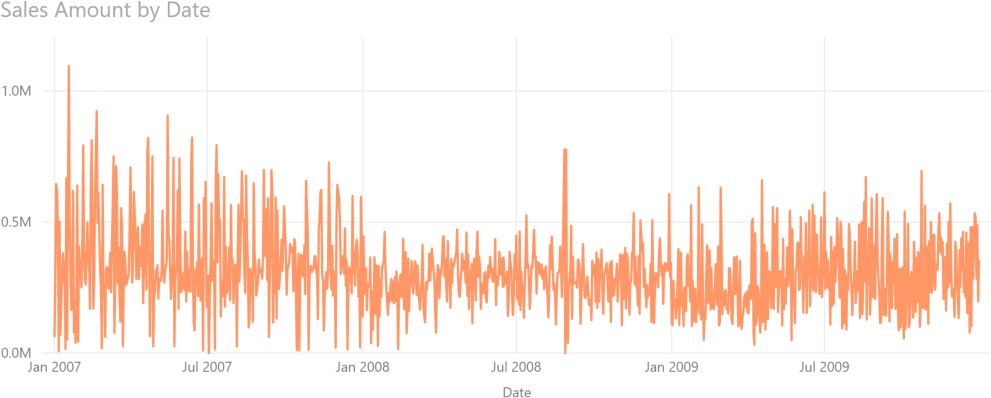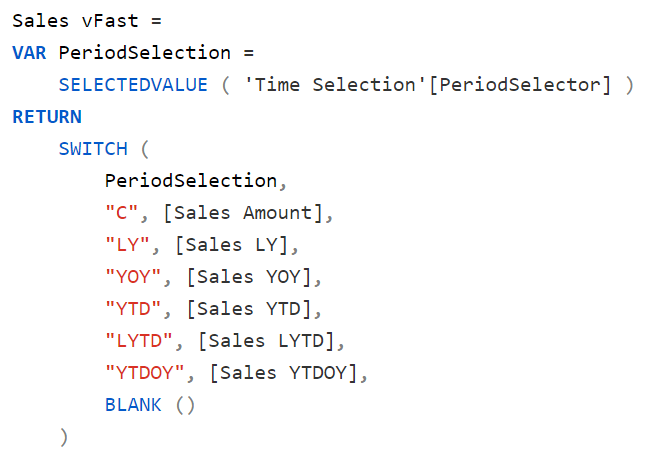-
This article describes different techniques to display the first three products for each category in Power BI. It includes considerations on how to adapt the technique to different models and requirements. Read more
-
This article explains how calculation items are applied to measure references, and it is part of a series dedicated to calculation groups in DAX. Before starting, we suggest you read the previous articles in this series. Read more
-
This article is the first of a series dedicated to calculation groups in DAX. This introduction explains the capabilities of this feature and how to create calculation groups in a Tabular model. Read more
-
This article describes how to correctly use column references when manipulating tables assigned to DAX variables, avoiding syntax errors and making the code easier to read and maintain. Read more
-
This article describes how to write DAX measures that compute aggregations or comparisons with past dates without showing or comparing future dates. Read more
-
This article describes how DAX automatically converts data types in arithmetic operations. These small details can cause and explain differences in results when using the same operations in other languages. Read more
-
This article shows how to improve line charts with a date-based X-Axis in Power BI using DAX, and how to make correct choices in the data modeling and visualization properties. Read more
-
This article describes how variables should be used in DAX expressions involving IF and SWITCH statements in order to improve performance. Read more
-
This article describes how to create a measure displaying the name or value of an element that has a specific ranking, with different option for managing ties. Read more
-
This article describes possible optimization approaches to improve the performance of nested iterators in DAX. Read more
